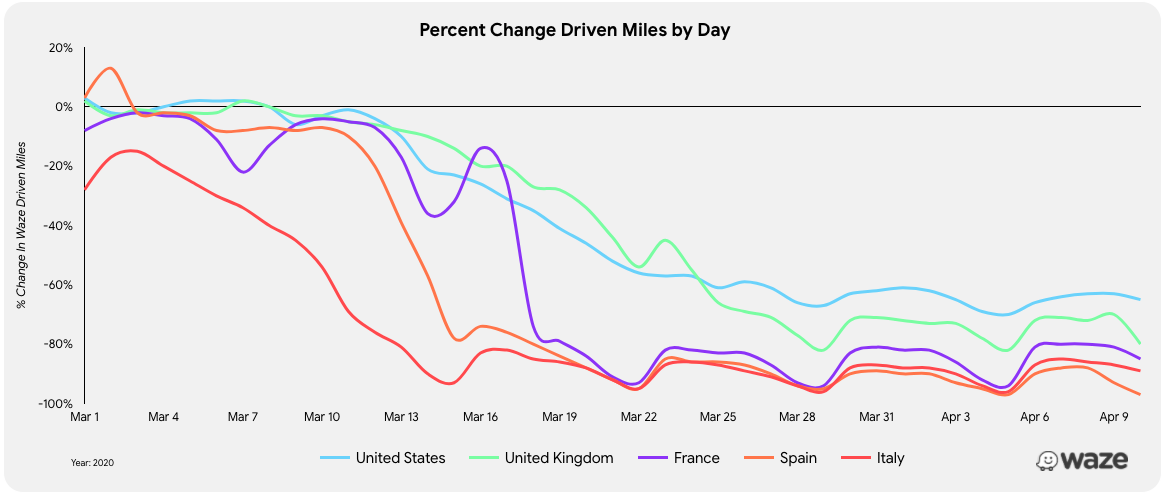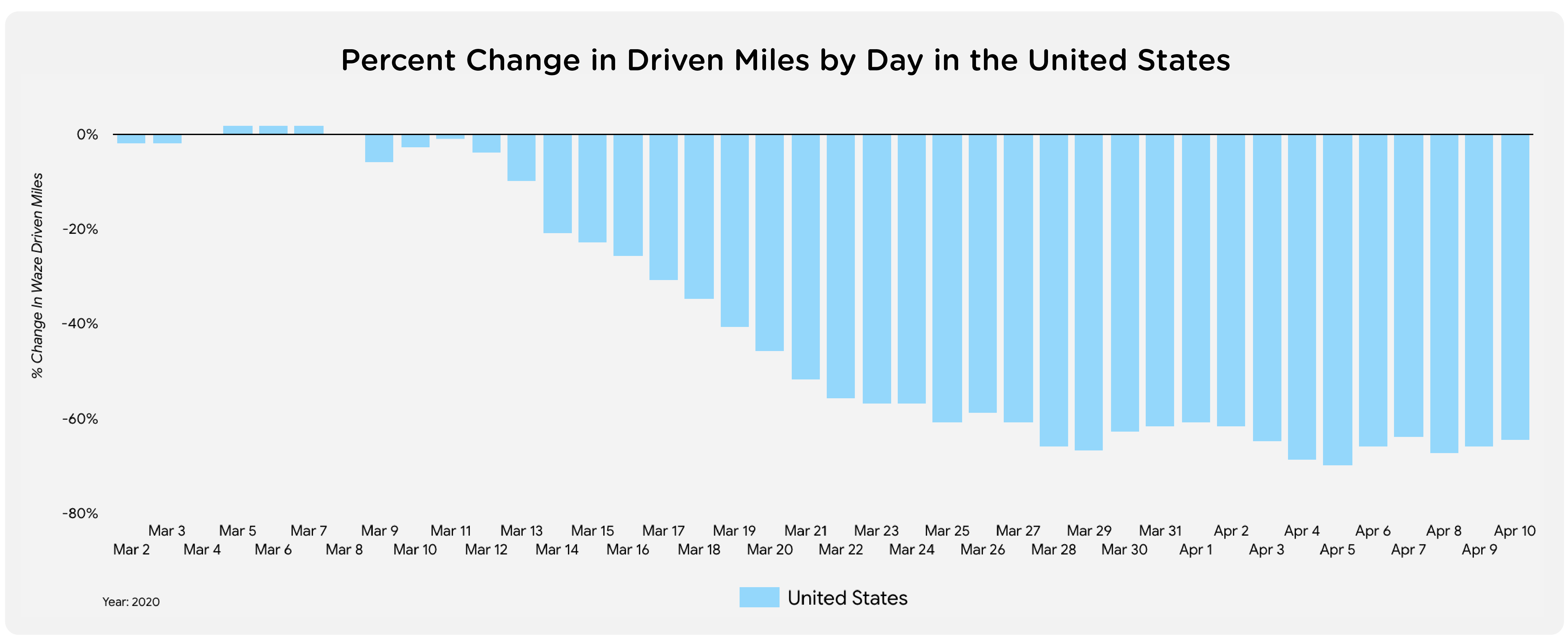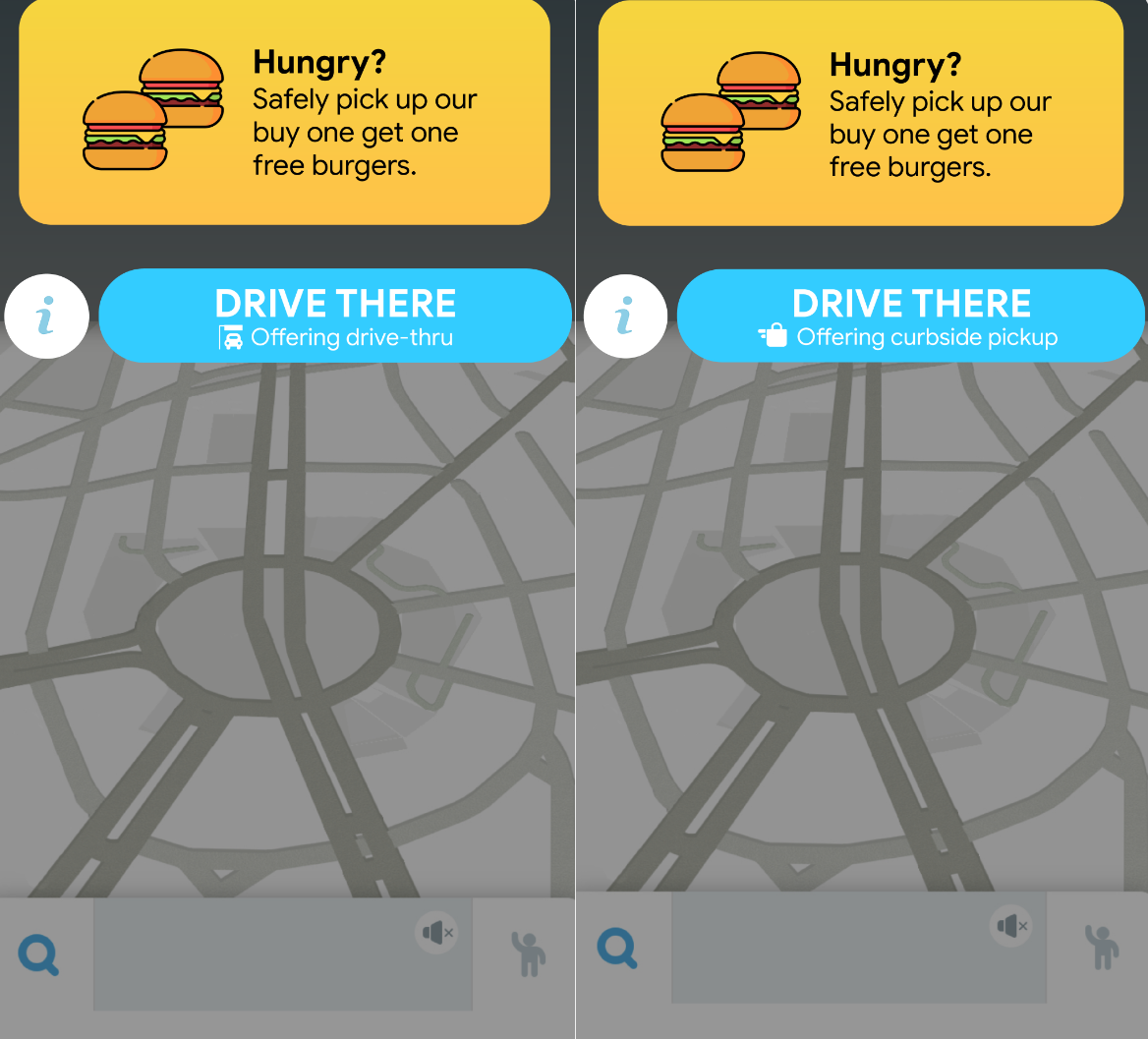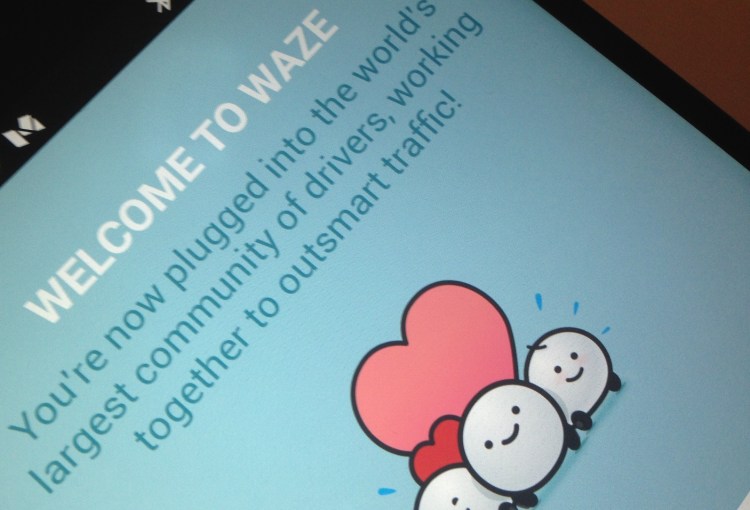testsetset
Waze has released data revealing the extent to which the COVID-19 pandemic is keeping drivers off roads around the world. The navigation app, which Google acquired for more than $1 billion back in 2014, is used by 130 million people globally for turn-by-turn navigation and real-time travel updates provided by other Waze users.
Now Waze has revealed that since widespread international lockdowns have come into effect, drivers are traveling 60% fewer miles compared to a daily average taken for a two-week period in February. While this doesn’t directly translate to fewer people driving (though that can certainly be inferred), it does highlight the impact lower carbon emissions are having on the planet. When China went into lockdown, NASA satellite images revealed a decline in pollution, a trend that emerged first near the source of the outbreak in Wuhan. But as the country gradually resumed business, pollution levels increased accordingly.
Lockdowns
Digging down into specific regions, Waze data shows how stricter lockdowns correlate with miles driven per day, with Italy, France, and Spain — among the countries worst hit by the COVID-19 outbreak — all seeing an 80%+ decrease in road miles.

Above: Global percentage change in miles driven per day
The U.S., meanwhile, sits at a little over the global average at 67% (as of April 10).
June 5th: The AI Audit in NYC
Join us next week in NYC to engage with top executive leaders, delving into strategies for auditing AI models to ensure fairness, optimal performance, and ethical compliance across diverse organizations. Secure your attendance for this exclusive invite-only event.

Above: U.S. percent change in miles driven by day
It’s also worth noting that many people are clearly still using roads to travel, and while some of those journeys may be “non-essential,” millions of frontline workers still need to move around to fulfill their jobs. As such, Waze has introduced a number of new tools and features built with the COVID-19 crisis in mind. This includes surfacing places that support drive-through or curbside pickup orders.

Above: Waze: Curbside pickup and drive-thru
While Waze hasn’t committed to providing an ongoing database of mobility trends around the pandemic, other technology companies have. These include Waze parent company Google, which earlier this month published reports for 131 countries showing the extent to which visits to shops, parks, and workplaces had dropped as a result of stay-at-home orders.
Yesterday, Apple also released aggregated mobility data from Apple Maps, showing trends related to people’s driving, walking, and public transit activities. For comparison purposes, Apple’s data shows a 45% decrease in routing requests in the U.S. compared to the baseline, though this doesn’t cover entire states — including for parts of the country without official lockdown orders in place.


